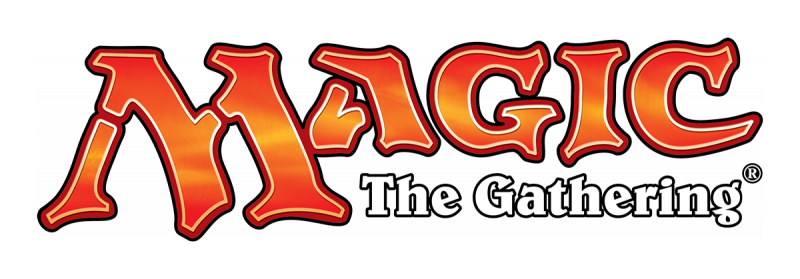Design Concepts from Magic: the Gathering
tl;dr: Building a "cube" in Magic: the Gathering is in many ways similar to building a TC plug-in for the EV/CF series. I've built a few cubes, and in the process I learned a lot about designing them well, and lately I've been thinking about how to adapt those design concepts to an EV/CF context and to Orion Skies specifically.
Magic is one of the few other games that has truly stood the test of time, at least for me. I definitely recommend trying it if you can find someone to play with.
In addition to the EV series, one of the other handful of games I have enjoyed since childhood is Magic: the Gathering. For those unfamiliar, it's a strategy card game with (currently) about ~22,000 different cards, each of which has unique abilities. There are a few different ways to play, but it always involves choosing which cards to put in your deck such that the combination of cards will have a coherent strategy. Your opponent(s) have done the same with their deck(s), and when you play you're trying to out-strategize them, essentially.
Magic cards are released in "sets", with each set containing anywhere from ~150 to ~300 new cards with new abilities. Typically several sets are released each year, and they are designed such that their cards can readily be combined with those from all of the other sets.
However, each set has its own setting, story, and unique gameplay design, and is intended so that you can, if you choose, play using cards from just that 1 set, using special rules in which you have to essentially improvise your deck on-the-fly using cards from that set. When you play this way, each set feels a lot like a total conversion scenario in the EV series – it's its own world with its own story and its own challenges. For example, here's a set with a gothic horror theme, and another focused on inventors and technology.
Some players who enjoy playing this way build what is essentially a custom, fan-made set, combining cards from all of the different sets from Magic's history to create a combination of cards with its own unique, coherent design. These are called "cubes", and in many ways they are very similar to total conversion plug-ins.
Several years ago, I started building cubes to play with my friend group. I have four of them at this point, each with its own story/setting and gameplay themes:
- A cube with an apocalyptic setting, inspired by Mad Max and the Terminator series.
- A cube inspired by the film "Pacific Rim", in which massive robots wade out knee-deep into the ocean to fight massive monsters.
- A "machine war" cube, based on the "Brothers' War" story from Magic.
- A cube that just combines 3 specific official sets with compatible gameplay themes.
In the process of designing, building, and upgrading/revising these cubes over time, I've learned a lot about designing them well. My current framework for building a cube and ensuring it's interesting and fun is as follows:
- Bullet-Point Concept: Just a few words that describe the gist of what the cube is about, e.g. "Pacific Rim cube" (which, in the Magic context, translates into "ocean-themed, big-creatures-based cube").
- Unique Gameplay Dynamics: What will make playing this cube feel different and novel compared to playing any other cube or set out there?
- Story: Where/when does this take place? What's going on? What are the different characters trying to do?
- Key Word: One word/concept that abstractly captures the "vibe"/"feel" of the cube, in terms of both story and gameplay. For example, my apocalypse-themed cube's keyword is "brutal".
- "MSCTT": This is basically designing the gameplay elements to have interesting interactions with each other and to enable complex strategies. It stands for "Mechanics, Synergies, Counters, Tradeoffs, Tension". Typically I have to draw a diagram to visualize the connections/interactions between different components.
Why am I spending all this time talking about Magic: the Gathering? Because I think cube design has a lot in common with TC design, and many concepts can apply to both.
This month, amongst other things I spent some time thinking about how well those 5 design points would translate to an EV/CF context, and how I could use them to guide the design of Orion Skies. Items #1-#4 apply directly, I believe. Item #5, "MSCTT", probably deserves more reflection to figure out how those concepts would best translate to the EV/CF game engine.
In any case, here are my current (subject to change) thoughts on these design concepts for Orion Skies:
- Bullet-Point Concept: Nebula plug-in + homage to East African culture.
- Unique Gameplay Dynamics: Detection, stealth, and navigation in the nebula fog; high-performance fighters; heavy forward cannons; dodgeable missiles; no Monty Pythonning.
- Story: Set in the Orion Nebula, which has been settled by people of East African descent during the "Great Evacuation" from Earth. Some people live a high-tech "spacer" or "megacity" lifestyle, while others live more traditionally. Much of the nebula remains unexplored, and many wondrous things can be discovered by those who venture away from the settled worlds. (There will be more to this, including some very major pieces, but the details are still a work in progress and not ready for sharing yet.)
- Key Word: I've struggled to settle on just one specific word for this so far. Some candidates include: discovery, wonder, exploration, hope.
- "MSCTT": This will take some time to figure out how best to apply these concepts to an EV/CF setting, and will also require plenty of in-game testing to ensure that my hypothetical ideas work out well in practice.


Comments
Post a Comment